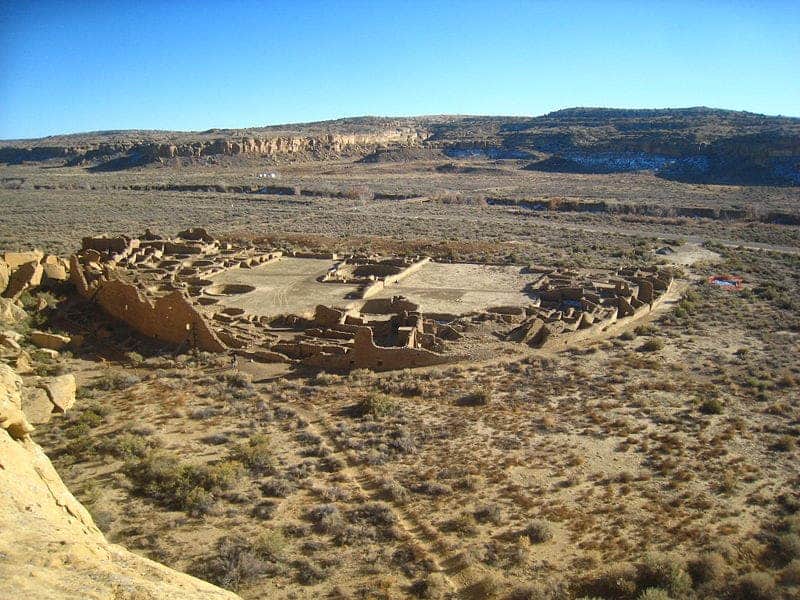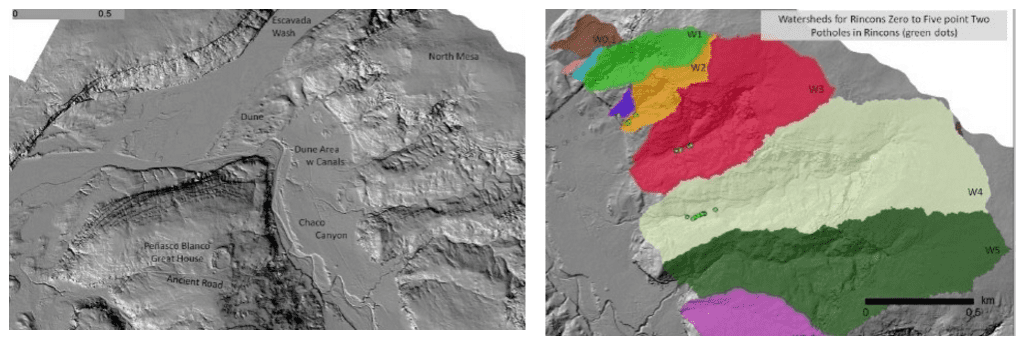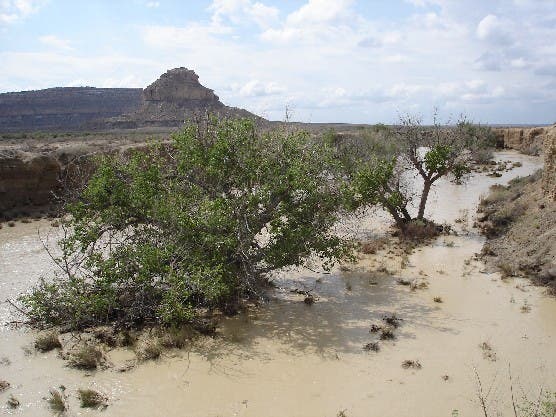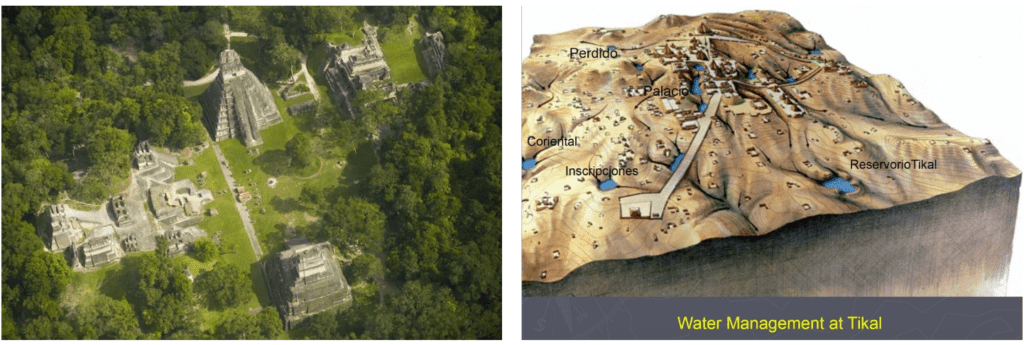Water is the most important resource on the planet. Luckily, it’s also abundant in many parts of the world but as the recently ended Californian drought reminded us, plentifulness can be an ephemeral illusion. Humans are putting more pressure on fresh water resources than ever before and the uncertainties of man-made climate change will only make conservation strategies more complex.

Scientists studying water conservation are preoccupied with finding the most efficient practices to capture, replenish, and ultimately distribute water to communities. But although the challenges we face today are very complex, they’re not unprecedented. Taking cues from the past to better understand the present and predict the future, a cross-disciplinary team of archaeologists, engineers, and geographers from the University of Cincinnati traveled to the arid American Southwest and humid rainforests in Central America and Southeast Asia to explore how ancient communities like the Chaco or Maya managed their water resources.
“When we look at the trajectory of our changing climate, we realize that the issue is not just climate change but also water change. Climate and water work synergistically and can affect one another in critical ways,” says Vernon Scarborough, professor and department head in UC’s Department of Anthropology. “Given the current climate patterns, in this and the next century, we will likely face further rising sea levels, less potable water and a compromised availability of freshwater as a result of drought in many areas and unusually heavy rains and runoff in others.”
“So we are looking at how the past can inform the present,” adds Scarborough.
For more than two decades, the researchers have been investigating remote areas known for their seasonal water and environmental challenges. One of the focus on their investigation is the ancestral Puebloan community in Chaco Canyon, New Mexico — a civilization that dominated the southwestern United States from the mid-9th to early 13th centuries. According to a paper published earlier this year by researchers from the American Museum of Natural History (AMNH) in New York City, Chaco was a state-level society or kingdom with a clear chain of command. The most surprising find following DNA sequencing of the remains of the ruling elite was that the Chaco was a matriarchal lineage, essentially a people ruled by women. It’s one of the few examples of civilizations ruled by women in an ocean of patriarchal hegemonies.
The AMNH study ended a life-long debate debunking those scholars who had previously suggested the Chaco was an egalitarian society with no clear chain of command. Another long-standing debate is whether the Chaco was truly a sustainable community that knew how to manage its limited local resources or, given the arid condition, merely a seasonal gathering place for ritualistic purposes that depended on imported resources such as food and water.
To answer this question, the researchers exploited all the tools in their arsenal. To know where to start digging, the whole area around the Chaco Canyon was surveyed by helicopters equipped with light, imaging, detection and ranging (LIDAR) technology. The LIDAR measurements were used to construct a map of the canyon’s surface morphology which provided valuable hints like how the water flows off the mesa tops into the drainage ditches and into the valley floors.

Geologists then got their boots dirty on the ground where they drilled deep for sediment cores. Later in the lab, these samples showed how the soil looked like in the past based on its geochemistry. For instance, during the Chaco reign, the scientists found the soil was used for growing maize (corn), which is a highly water-intensive crop. The team uncovered this fact after they found high levels of salt in the soil, previously thought to be a bad omen. But closer investigation showed the salts are actually a form of a calcium sulfate mineralization that may have functioned to enhance the soil for the maize (corn) grown in that area.


Even today, Chaco canyon has very unpredictable weather. Chaco is located at 6,200 feet in elevation, and unexpected changes in temperature or precipitation are common occurrences. About 1,000 years ago, things weren’t all that different so the Puebloans learned to exploit these patterns. During the rainy season when the floodwaters hit, they would capture runoff water from small canyons known as rincons but also from local periodic streams.
“When it rained in one spot over here the Ancestral Puebloans took advantage of it, and when it rained over there they took advantage of that,” Scarborough says.
Interestingly, the researchers think the matriarchal leadership helped in this respect.
“To effectively manage water requires flexibility and creativity as rainfall is unpredictable in the Southwest,” says Samantha Fladd, an advanced doctoral student from the University of Arizona, also working on the Chaco project here at UC. “The presence of a hierarchical matriline helps to explain how Chaco residents coordinated these activities in order to practice successful water management and agriculture.”

Farther south, in the Guatemalan rainforests around Tikal, ancient Mayans had different challenges to face. Using similar methods as those used to explore the Chaco, the researchers found evidence of elaborate water storage systems which captured runoff during the rainy season. Like the Chaco, the Tikal Mayans had rich fields of corn as evidenced by geochemical signals from the soil.
The Maya learned to alter their surroundings to exploit their water resources as best as possible. It went very well for them having flourished for more than three centuries. However, bad oversight brought their demise.
Ultimately, the Maya collapsed because of climate change. According to a team led by paleoclimatologist Douglas Kennett of Pennsylvania State University, between 660 and 1000 C.E. the Maya went through a drying trend which exacerbated tensions. Finally, a long drought lasting between 1020 and 1100 C.E. occurred in the midst of the population collapse, marking an end to the great civilization.
“Essentially, they may have affected a change in their own climate,” says Scarborough. “After several years of deforestation — clearing out trees and forests to make room for crops — the Maya unintentionally, but perhaps dramatically upset their annual rainfall, which precipitated degrees of drought that ultimately forced them to abandon the once fertile environment. Sound familiar?”
Some think because we’re far more tech savvy, a similar fate can’t fall upon us. It is true that modern irrigation and water infrastructure works like dams dramatically favor our civilization and lessens the risks but climate change is happening very fast today and many communities in impoverished regions are highly vulnerable. It may be several years before the damage caused by contemporary climate change becomes apparent and future water management will have to adapt to constantly shifting conditions.
“If you don’t design for that appropriately, you can be building management networks and ways to capture and control water that will wind up getting buried like the build-up behind modern dams, or plans can get abandoned altogether as a river changes,” said the UC researchers who will present their findings at the upcoming Society for Applied Anthropology, (SFAA), 77th annual meeting in Santa Fe, New Mexico.
“How past populations dealt with variable precipitation like that identified at Tikal, Chaco Wash or drainage patterns overall has been very dynamic. Such investments in building massive dam projects today is a costly expenditure of money and time that might well benefit from views of the past.
“We don’t want to waste that money on high-priced water infrastructure if we can engage in smaller scale, lower investment strategies like our ancestors did.”






